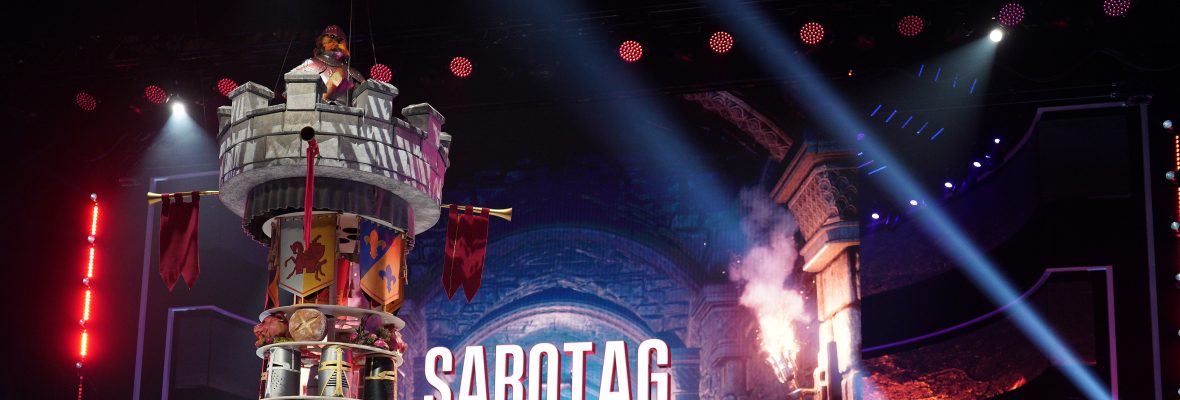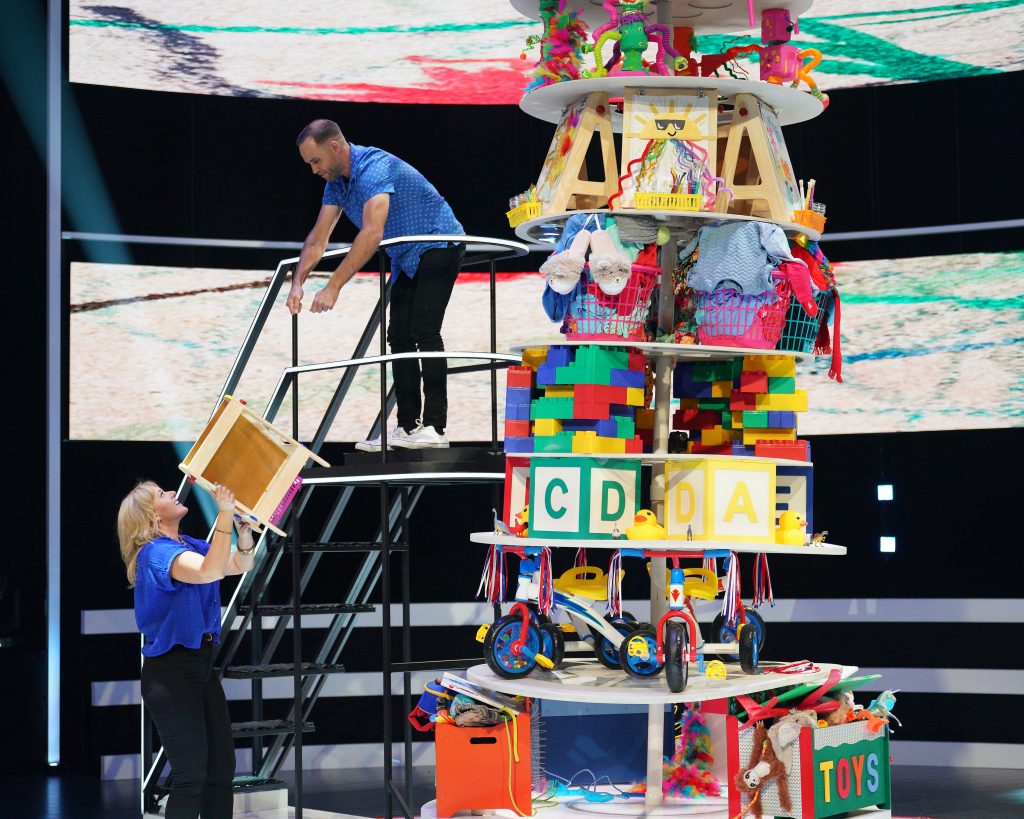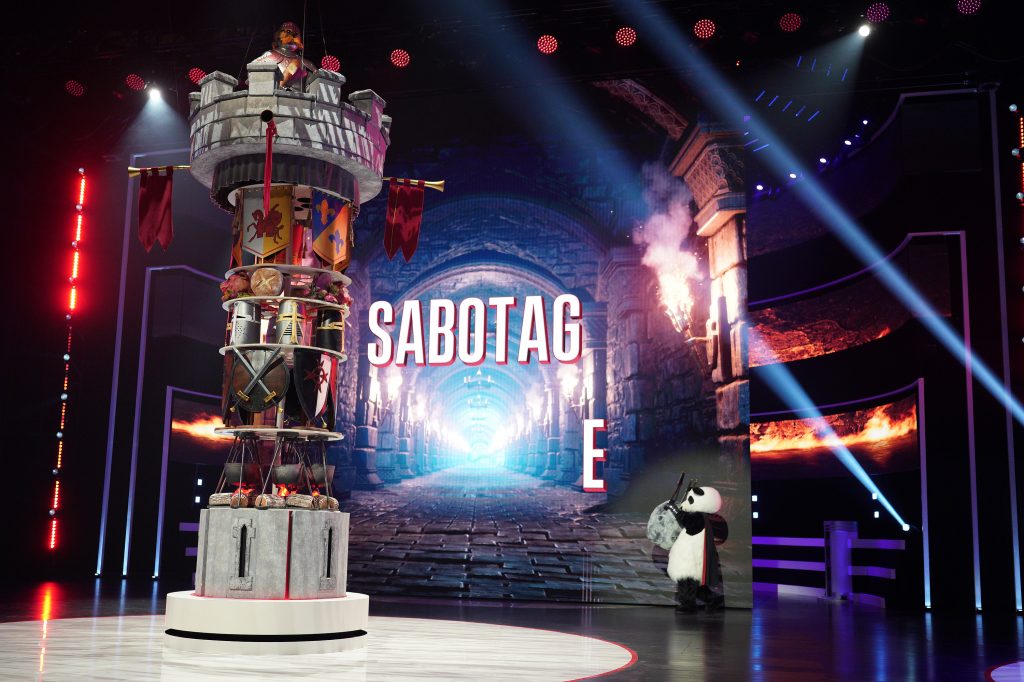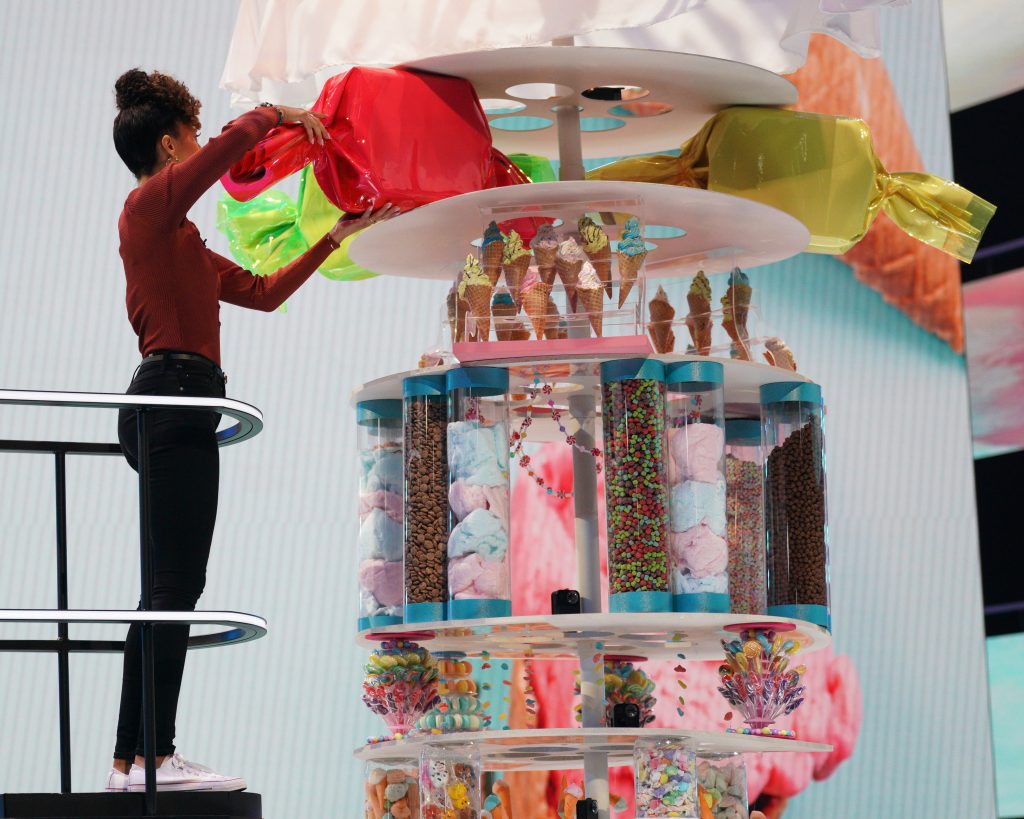
How The Final Straw Came To Life
Executive Producer Keith Geller, Art Director Mike Carney and Prop Master Richard "Augi" Maher talk to Cory about ABC's perilous stacks.
The Final Straw is ABC’s newest Summer Fun and Games spectacle, a larger-than-life game of Jenga-meets-The Incident with a quarter million dollar jackpot. I sat down with showrunner Keith Geller, art director Michael Carney, and prop master Richard “Augi” Maher to learn how this spectacle of a game show came to life.
Keith, we’ll start with you. What the hell is this show?
Showrunner Keith Geller: The show is a very unique game show, something that you haven’t ever seen before. It’s a very simple concept, which is, you know, remove items from a stack and don’t let it fall. Don’t be the one to knock the stack over. It’s a very simple premise for a show that we took to a very extreme level.
Definitely; it feels a lot like Jenga or like Katamari Damacy, if you know that video game.
In and of itself, you know, it is a dexterity game. This is sort of our own take on a stacking dexterity game.
Before I start talking about the art direction and all the props—visually, the show looks bananas in a very good way. So before I even ask those questions, I want to get a little more in depth with how the game works.

We wanted to create something that was incredibly simple to follow—up until the finale, where things get a little bit more complicated. Our goal was, you know, excellent co-viewing and something that doesn’t really need to be explained. The only thing that you need to know is that if you’re the last person to touch an item before the stack falls, you’re out.
We’ve got four teams of two players, and they’re all friends, relatives, coworkers. The show is set up tournament-style, so you have two teams of two playing each other on stack one, and then two teams of two playing each other on stack two. The winner of each of those goes on to stack three, which is a slightly larger stack where they’re playing for a little bit more money.
The real goal is to move to the final round where you play against the Mega Stack. The teams have to pick from the stacks sequentially and it’s really just a matter of, you don’t want to be the reason for the stack falling over.
What’s the top prize for the ultimate stackers?
You can win up to $265,000.
What a specific amount. I love it!
We wanted to give teams a little something for winning the first and second rounds. So in the first round winners get $5,000. Then, if you win the second round, you get an additional $10,000. So, by the time you go to the Mega Stack, you’ve got $15,000.
And then there’s another $250,000 for the Mega Stack.
That is correct.
Hey, people are walking away with stuff. That’s nice. I like that. And you’re using inertia, physics and gravity to engage and build suspense. So I love that.
The production company that created the show, B17, came to me last year, and they said, “We don’t know how to build it. And we need to make sure it doesn’t kill anybody.” Those are the two major things right, that we needed to accomplish immediately.
Two things that Jeopardy! never had to deal with.
Whenever I get called for a show, it’s usually something where there’s some sort of possibility of something falling, or people getting wet, or something like that. But yeah, so I started working with these guys, and figuring it out.

When it comes to figuring it out, Mike and Augi, we start talking with you now. My first question: it feels like you have a lot of creative leeway with a game like this, because at this point, the focal point is this random array of stuff, and then around it is, is basically just contestants. What were the challenges for you as art director to make this really pop, and to also make it fair as a game show?
Mike Carney, Art Director: I’m going to address the function first, because The Final Straw really is a show that is entirely dependent on the function of the towers, right? When Keith came and brought this show to us—I’m not gonna say I was scared, but I was a little cautious, because we’re building a tower that’s, you know, between 17 and 20 feet tall, it’s got to fall, but it’s got to be a controlled fall. As Keith mentioned, we can’t hurt anybody. But we have to have the gameplay last long enough to where it’s actually a game and it just doesn’t immediately topple over or stay up too long.
We did a lot of testing with different materials for the shelves—everything from kind of a Rhino liner kind of material over foam core. We tried pretty much everything. What we landed on was just regular white foam core with some cutouts, and that allowed a kind of an airiness to the shelves on the stacks. We cut windows in it to also keep the weight down.
Also, we had a spine that went up the tower, just to kind of hold it up. The thing with that, is not wanting the tower to fall before we wanted it to.We ended up going through probably four or five iterations of the spine. We had to figure out how to rig the towers in such a way where when the tower falls, it would activate a controlled fall. That took a lot to figure out.
It’s all about the stacks being precarious. And it’s all about them wobbling, you know, and looking like they’re going to fall and, you know, eventually them falling. Every stack was designed with a giant topper in mind. When you’re designing something like this, you can almost start at the top and work your way backwards. For example, the seafood tower. It took us a long time to figure out that we should do a seafood tower. But once we once we did, there was no stopping us. That came to us by finding a picture of the world’s largest shrimp cocktail.
Richard “Augi” Maher, Prop Master: Can I break in here and say that that was Keith’s baby?
KG: Regardless of where the idea came from, it could not have been pulled off without these guys. The idea of the topper sometimes comes before the tower itself, because you think of the thing that’s up there that you know that people are going to be scared of falling on them. And that’s going to look huge on TV.
So I don’t have a lot of experience with building props. But the TikTok algorithm keeps feeding me prop master content, so I have a very cursory level understanding of how difficult it is to make props look and function safely. It seems like with these very specific towers, and the needs for them to be different sizes and different weight distribution, I suppose you must have had your work cut out for you.
RAM: I’m used to challenges on shows having worked on shows like Double Dare. My main thing for most of my stuff, which is for competitive shows or kids shows, is you have to make these props bulletproof. That’s usually my challenge. With The Final Straw, the added challenge was, we wanted them to break when they fell, as well as the height requirements, and the supporting requirements.
I did a ton of trial and error. My team really leaned heavily, more heavily than we ever have, on the challenge department to let me know what was working and what wasn’t, because I had to put things out there and then dive into the next one and put things out there and dive into the next one.
My main concern was that the stacks function correctly, that they wouldn’t kill somebody, and then aesthetics. I wanted to make sure that they looked amazing. This show made me do things in reverse order than I normally would. For example, like there’s there’s big ol’ safes on one of the towers. And obviously, we could not put real big ol’ safes on the tower. It was figuring out the best way to create those props with the budgetary constraints that we have. I had team leads to divvy up the towers. I relied on them heavily to help with the looks of stuff. I would guide things and then, you know, come back.
I’ve got to say, I’m really proud of a lot of these props, because you know, Keith and Carney would come up with ideas, I’d look at them and tell them if that is a possibility. I would say, eight times out of 10, we were able to accomplish it. There were a couple things where I would just be like, we got to shift this a little bit—for example, a prop couldn’t have a point on top of it because it needed to support on top and on bottom. It was figuring out how the mass of how big the top could be, how big the bottom could be, and where it would stack on the tower.

How intricate is each tower, in terms of individual props?
It’s kind of insane. It’s funny, because we had to start working on like, the sports tower, for example, which was one of our earlier ones. We learned a lot doing that one, but by the time we got to like the Franken-Straw Tower, I kind of have a history of creating horror and sci-fi props, so I said, “I’ll take on this one.” While I was helping with everything else, I just sort of kept creating levels for Franken-Straw that appealed to me. That was becoming a little intricate, because I had realized that on every level I put horror elements into it. By the time we got to the end, there was like, I don’t even know—12 blinking remotes. It was a little insane.
KG: Our challenge team would come up with an idea for a tower or a prop. We would pass that idea to Augi’s team and they would return with 20 different things that they could either get or make that we could test. Whatever that item would be, we would either purchase or build it and then put it into a stack.
We would have stacks that were built 20 feet high with just foam rollers. We would use those foam rollers to figure out the gameplay. When we would get a prop, we would put it in place and make sure that it didn’t topple the whole thing, that it wasn’t too heavy. When we were first going through the design process, we started on a much cleaner idea of having basically one item on each level. We have, you know six jukeboxes, for example, in the 50s diner stack, then dishes on the next level, but at the beginning, it was just the theme and objects, so we could have like 10 different things on the level. It was like like a garage sale.
I’m excited to see the YouTube videos and TikToks of people trying this out in their house with stuff that they have laying around. That will be completely terrifying.
This is a friendly BuzzerBlog reminder: please don’t do this at home. Your dishwasher is not made out of foam core. The Final Straw premieres Sunday, July 10 at 9/8c. This interview has been edited for clarity and length.
